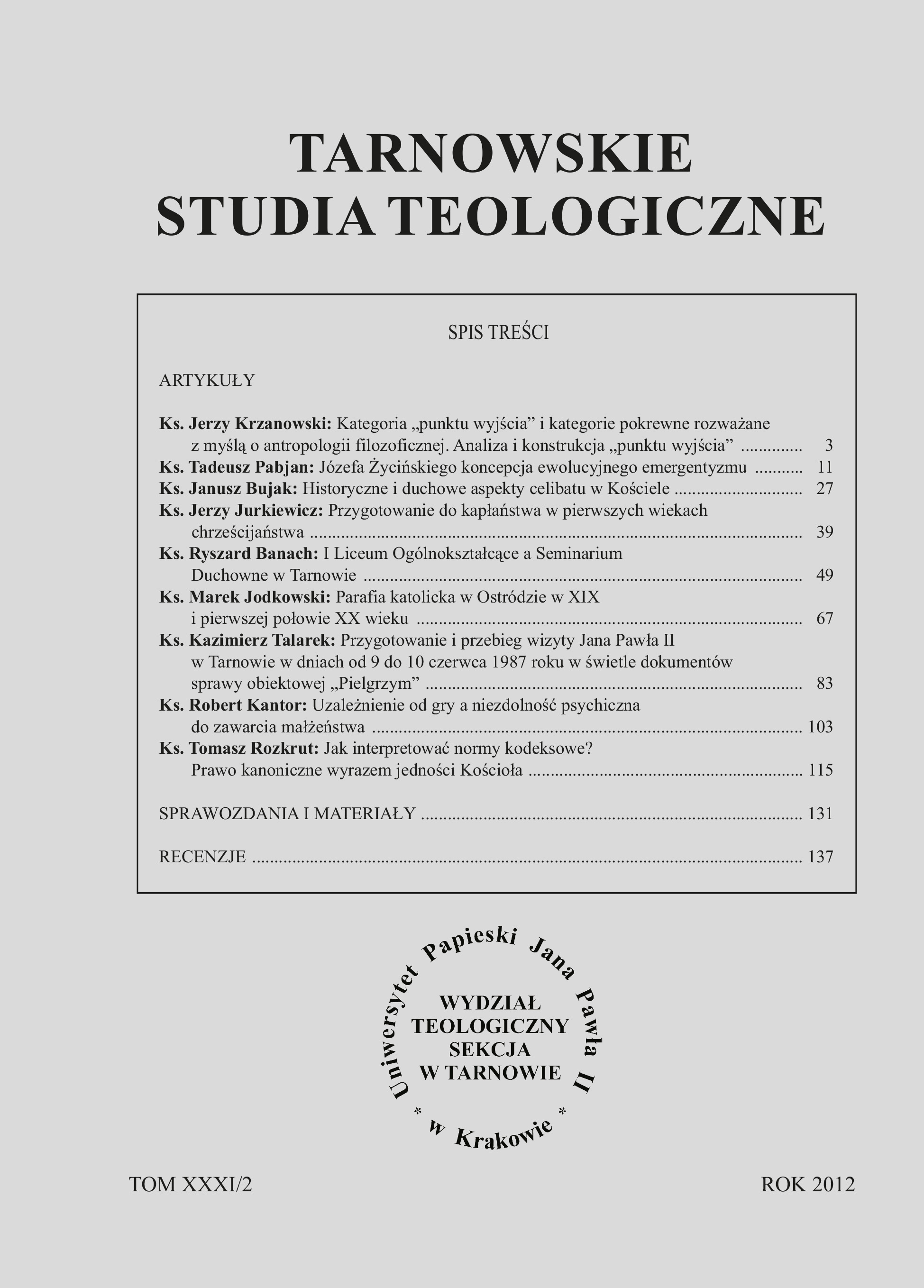Jak interpretować normy kodeksowe? Prawo kanoniczne wyrazem jedności Kościoła
DOI:
https://doi.org/10.15633/tts.295Słowa kluczowe:
Biskup Rzymski, interpretacja, jedność, prawo partykularne, prawo powszechne, zasadyAbstrakt
It is over a quarter of a century since the promulgation of the postconciliar Code of the Canon Law. The past time is characterized by insignificant revisions of the Code legislation introduced both by John Paul II as well as Benedict XVI. Daily life of the Church provides various information that canons of the Code of John Paul II are incessantly interpreted, mainly by judiciary of the Church as well as practice of the diocesan curias and parish offices; naturally it is necessary here to emphasize the considerable and dominant role in applying law by practice of the Roman Curia. Apart from this, it is essential to add the legislative action of particular diocesan bishops and conferences of bishops, among which the Italian Bishops’ Conference must be predominantly highlighted. Particular legislation issued by postconciliar particular and diocesan synods cannot be omitted; undoubtedly widely understood postconciliar monastic law also remains a specific collection of the canon law. The article discusses the aspect of an eventual possibility of changing the retirement age of the parish priest by a legislator, mainly by pointing out how to interpret the canons of the binding Code properly. This aspect is examined not unilaterally but in relation to two issues, i.e. regarding canonical marriage process and abovementioned matter concerning the eventual possibility of changing the retirement age of the parish priest. This is a short scientific reflection on the subject of interpretation of the norms of the Code, without critical reference to particular judicial as well as administrative and legal practice.Pobrania
Opublikowane
2012-12-31
Numer
Dział
Artykuły
Licencja
Prawa autorskie (c) 2012 Tomasz Rozkrut

Utwór dostępny jest na licencji Creative Commons Uznanie autorstwa 4.0 Międzynarodowe.
Autorzy publikujący w czasopiśmie udzielają jego wydawcy zgody o następującej treści:
- Autor zachowuje autorskie prawa majątkowe do utworu, a jednocześnie udziela wydawcy czasopisma zgody na jego pierwszą publikację w wersji drukowanej i wersji online na licencji Creative Commons Uznanie autorstwa 4.0 Międzynarodowe oraz zgody na wykonywanie opracowań, w tym przekładów.
- Autor ma możliwość udzielania zgody niewyłącznej na opublikowanie utworu w wersji, która ukazała się w czasopiśmie (np. zamieszczenia go w repozytorium instytucjonalnym lub opublikowania w książce), wraz z informacją o jego pierwszej publikacji w czasopiśmie.
- Autor może umieścić swój utwór online (np. w repozytorium instytucjonalnym lub na swojej stronie internetowej) jeszcze przed zgłoszeniem utworu do czasopisma.

